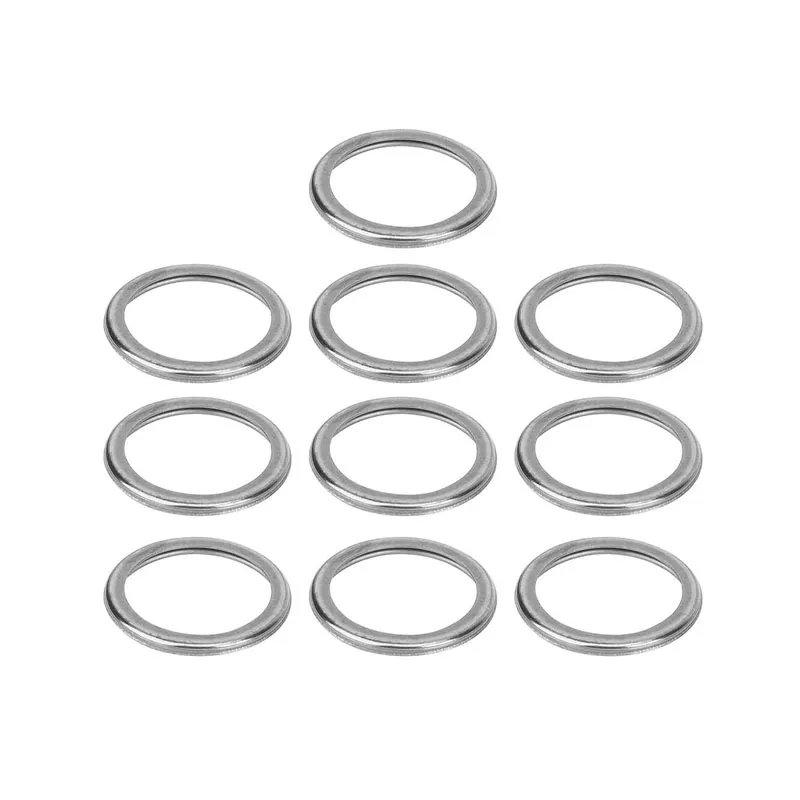oil lip seals
Understanding Oil Lip Seals Their Function and Importance in Machinery
Oil lip seals, often simply referred to as lip seals, are critical components used in various machinery and equipment to prevent leaks of oils and other lubricants. Their primary function is to facilitate a tight seal between rotating shafts and stationary parts, thereby preventing the escape of essential lubricating fluids and the ingress of contaminants. This article explores the anatomy, types, applications, and significance of oil lip seals in engineering.
Anatomy of Oil Lip Seals
An oil lip seal typically consists of several key components a cylindrical metal casing, a sealing lip, and a spring. The metal casing provides stability and support, ensuring that the seal maintains its shape under pressure. The sealing lip, usually made from elastomeric materials like nitrile or fluoropolymer, is the part of the seal that makes direct contact with the rotating shaft. The design of the sealing lip may vary; it can be single or double-lipped, with some variants featuring additional auxiliary lips to enhance sealing capabilities.
A spring is often included within the seal to apply a consistent force against the shaft. This force helps maintain contact between the sealing lip and the shaft, ensuring that the oil remains contained while also accommodating minor misalignments or shaft wear that may occur over time.
Types of Oil Lip Seals
Oil lip seals can be categorized based on their design and application
1. Single Lip Seals These are the most common type and are generally used in applications where the risk of contamination is low. They provide a straightforward sealing mechanism but may be less effective against high-pressure situations.
2. Double Lip Seals Featuring two sealing lips, these seals are designed to provide an extra layer of protection against contaminants. They can effectively keep dirt and debris out while minimizing oil loss, making them ideal for harsher environmental conditions.
3. V-Rings These are specialized lip seals that can be used in conjunction with other types of seals. They create a tight seal in various orientations, making them useful in multi-directional applications.
oil lip seals

4. Custom Seals In some instances, oil lip seals are custom-engineered to meet specific requirements for unique operating conditions, shaft sizes, or material compatibility.
Applications of Oil Lip Seals
Oil lip seals find applications in numerous industries, ranging from automotive to aerospace, manufacturing, and heavy machinery. Here are some common uses
- Automotive In vehicles, oil lip seals are found in engines, transmissions, and differentials, where they prevent oil leaks that could lead to mechanical failures and costly repairs.
- Industrial Machinery Equipment such as pumps, compressors, and conveyor systems extensively use oil lip seals to maintain lubrication while keeping dirt and moisture out.
- Aerospace In aircraft, oil lip seals ensure that critical systems remain lubricated under varying pressure and temperature conditions, contributing to the overall safety and efficiency of flight operations.
The Importance of Quality Oil Lip Seals
The reliability of machinery heavily relies on the quality of components used, and oil lip seals are no exception. A failure in a lip seal can lead to lubricant leakage, resulting in increased friction, overheating, and premature wear of mechanical parts. Therefore, selecting the right seal, considering factors such as material compatibility, environmental conditions, and load requirements, is essential for the longevity of equipment.
In conclusion, oil lip seals are indispensable in maintaining the efficiency and reliability of machinery across various sectors. Understanding their design, types, applications, and the importance of quality can guide engineers and technicians in choosing the right seals for their specific needs. As technology advances, the ongoing development of more effective and durable lip seals will undoubtedly continue to enhance machinery performance and lifecycle.
-
Simplifying Oil Changes: A Comprehensive Guide to Oil Drain Plugs and Their Variants
News Aug.04,2025
-
Mastering Oil Drain Maintenance: Solutions for Stripped, Worn, and Upgraded Oil Plugs
News Aug.04,2025
-
Fixing Oil Pan Plug Issues: Leaks, Stripped Nuts, and the Right Replacement Solutions
News Aug.04,2025
-
Everything You Need to Know About Oil Drain Plugs: Sizes, Fixes, and Upgrades
News Aug.04,2025
-
Choosing the Right Oil Drain Plug: A Guide to Sizes, Materials, and Drain Innovations
News Aug.04,2025
-
A Complete Guide to Automotive Drain Plugs: Types, Problems, and Innovative Solutions
News Aug.04,2025
-
The Ultimate Guide to Car Repair Kits: Tools and Essentials Every Driver Should Own
News Aug.01,2025
Products categories















